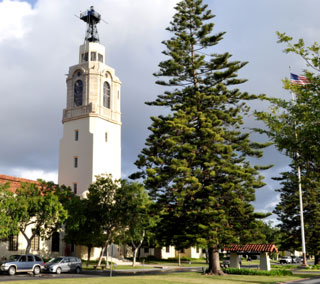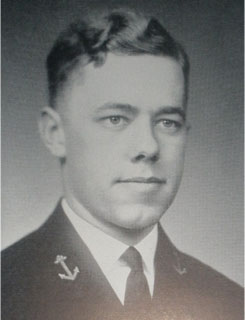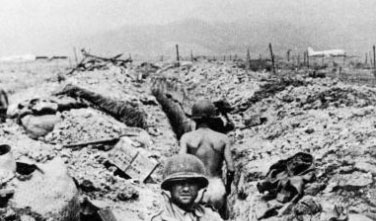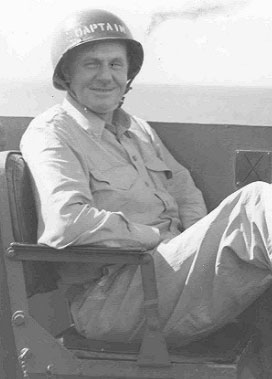The FIRST Fleet

(COMNAVAIRPAC Headquarters, Naval Air Station North Island, Coronado, CA).
Boomer was behind the Willow bar, and she was pouring with abandon. I had not had a good day at the office, and it was a relief to her about what her kids were up to, how her Dad was doing, and the rest of the maelstrom that is her life as a single Mom and breadwinner for her family. And living down by the Occoquan River, and don’t get me started on that.
Mac Showers was dressed in a jacket and bright shirt and looked comfortable despite the sweltering heat outside. I was completely unprepared, which made me feel vaguely unprofessional, a sensation that I hate.
“So you picked up your family and moved to the West Coast?”
“We did, indeed. We went to San Diego and settled in Coronado because the headquarters then was in a building on North Island Naval Air Station. I relieved Captain Wyman Packard, the first of two or three times when I relieved him.
“It was a small Naval Intelligence community then, Sir.”

(CAPT Wyman Packard, historian of Naval Intelligence, as a Midshipman).
“It certainly was. Not even a third of what it is today. We all knew one another. But the most interesting aspect of going into the tour was that at the time I got my orders, Wyman and some of the staff, including the admiral, were deployed. That was the first, and I believe the only time, that Commander, FIRST Fleet ever was deployed in an operational role. They were gone for several months. I think they deployed in mid-1956 and did not get back until the end of the year. They were deployed to Southeast Asia because of the French problems in Vietnam.”
“No kidding. You could have been part of the first American intervention in Vietnam!”
Mac smiled and nodded. “I suppose that is true,” he said. “I always like to be ahead of the game when I can. That was at the time of DienBien Phu, after which the French pulled out from Inda-China. But there was the concern that the French, because of their problems, might request U.S. assistance, so the U.S. Navy was prepared to set up a Southeast Asia Command which would have been a joint staff with Army and Air Force officers assigned. And to be ready for that contingency, FIRST Fleet went forward with part of his staff.”
“But what forces did he have to influence anything?”
“I don’t know the details, since I was a non-participant and this is just what I got from Wyman when we turned over. I understood that the Admiral borrowed some ships from SEVENTH Fleet. They had a couple carriers and supporting ships that operated in the South China Sea and were prepared to assist the French if they asked for help.”
“There has been some controversy over that. The accounts I read suggested that the weather was too crappy to provide close air support.”

(The French having a bad day at Dien Bien Phu).
“Probably true, but in the end, the French decided to abandon their empire and went home. They had problems much closer to home in Algeria, which was considered a part of metropolitan France at the time. That was far more emotional than far-off Indo-China.”
“Funny you say that, Admiral. I was in Tokyo and drinking at the greatest bar in town at the Old Sanno Hotel, the hotel the military appropriated during the Occupation. You could see just about any old Asia Hand in there at one time or another. Anyway, I was sitting next to a guy a little older than myself and we got to talking. He had been Special Forces, and was interested in the military history of the French and American wars. He told me that in 1969 he had arranged for an insertion mission at Dien Bien Phu so he could see it.”
“I guess that is what you call a combat tour!” laughed Mac. “I suppose I am not surprised, since all the regular Vietnamese forces were pulled south to replace all the VC who were killed in the Tet Offensive the year before.”
“It certainly blew my mind, but another pal who was in the Special Operations Group said they went north of the DMZ frequently and it was safer up there if you minded your own business.”
“Well, that opens up a couple cans of worms, but that takes us forward to Vietnam and I thought you wanted to talk about FIRST Fleet.”
“Well, my interest stems partly from the fact that I was on the THIRD Fleet Staff twice, with radically different missions. The first time, in Hawaii, we were ashore at Ford Island and supposed to be the Theater Anti-submarine Warfare Commander. Our main mission was targeting Soviet boomers. The second time we were in San Diego like you were, but although we had a flagship, we mostly did training and certification for deploying Strike Groups.”
“I will beg ignorance of what the THIRD Fleet people are doing now, but we were primarily responsible for the same thing: training and readiness among type-commanders who were then resident on the West Coast.”
“Same deal. AIRPAC and SURFPAC are still there. They used to each have a Captain billet, and some of our crusty old guys would trade jobs every three years because they liked living in San Diego.”
“I was a Commander then, but we had a lot more opportunity for officers who wanted to stay away from Washington. In addition to the Airdales and the Black Shoe Type Commanders, we had the Cruiser-Destroyer people, the Amphibs, and even SUBPAC and Service Forces had reps there from Hawaii where they were headquartered.”
“Wow, I had no idea they had actually streamlined things. It was a bewildering mass of competing equities even in my time.”
“under guidance from PACFLT HQ, we were responsible for herding the cats through unit, type and inter-type training of the non-deployed Fleet forces, preparing them for contingencies, emergencies and the deployment rotation to the SEVENTH Fleet AOR.”
“There are some constants in the Navy,” I said, taking a sip of vodka tonic. Mac looked at me with a questioning glance. “I know. I normally don’t drink hard liquor when I am out for Happy Hour at Willow, but it had been a bad day at the office. Not as bad as a Comprehensive Training Exercise off Camp Pendleton, but you know what I mean.”
“FIRST Fleet was a great tour, great quality of life, but as you probably know better than most, there isn’t a whole heck of a lot of intelligence going on. Our division was a very small office, The N-2 had one assistant and a yeoman, and that was it. The Assistant N-2 was normally an aviator and a sub-specialist. As one of my collateral duties, I was the Special Security Officer- the assistant normally was not cleared for COMINT. Those were the days when COMINT clearances were tightly controlled and extended only to a few people. I had a large double-door safe in my office that I inherited from Wyman. I kept all the COMINT materials in there, the studies, messages and background papers. I was the sole custodian, and I had to open up in the morning and close it at night, and remember to lock it up if I was going to lunch or make a head call. The only ones on the staff who were cleared were me, the communications officer, the Admiral and the Chief of Staff. Ops, Deputy Ops and the Plans guy.”
“So, it sounds like a great tour to be with the family in San Diego. It sure was for us.”

(VADM “Sol” Philips as a Captain in command).
“Oh my, yes. It was marvelous. Coronado Island is one of the great places on earth. But I should tell you about our Admiral- “Sol” Phillips. He was one of the great characters I knew in the Service.”
It looked like Mac was ready to tell the story, but I was confronting the bottom of my glass, and decided that the three of them had been plenty, since Boomer does a great pour and I had to drive. “I will catch that one next time, Sir. I am just amazed that our experiences were so similar in times so far apart.”
“I don’t think the missions were any different for any modern Navy,” said Mac. “You fight like you train, and that is what sets apart a first class Navy from all the rest.”
“Amen, Sir.”
Copyright 2017 Vic Socotra
www.vicsocotra.com
